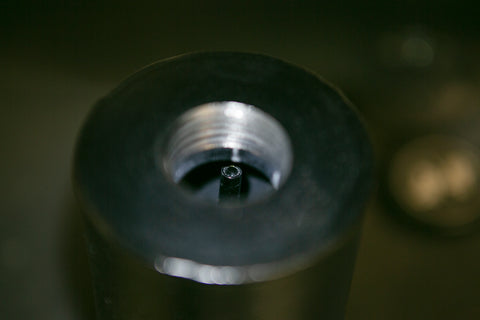
Why Our Coolant Reservoir is the Best Coolant Reservoir
Coolant overflow reservoirs are one of the many things we need on our cars, but can be one of those details that can be an annoyance when finishing your build. OE reservoirs are bulky. They’re plastic, and prone to cracking with age. They’re just plain ugly, and their placement is often inconvenient for modified or swapped engine bays.

Fortunately for your build, Chase Bays has come to the rescue with the ultimate coolant overflow reservoir. This isn’t just another offering, it’s the standard by which all other solutions should be judged.
We started by selecting the best material for the job, 6061 aluminum, anodized in a sleek, black finish. No rust, no cracking, no matter how many heat cycles. Then we got to work packing in all the important features to make it the best solution possible.

Coolant expands and contracts with heat cycles, so some sort of container is necessary to capture the overflow when the engine is warm and return it to the radiator as it cools off. The system needs to be vented, so that coolant can flow back and forth unhindered. Seems simple enough.
In heavy usage, there can be a lot of rapid expansion. High engine, and water pump, speeds push coolant through the system, and into the reservoir, very quickly, and at high pressures. These factors can cause coolant to push out of the reservoir vent, creating a mess, and requiring you to have to top off the coolant. Not ideal.

OE reservoirs avoid these issues by sheer size, being oversized relative to the amount of coolant that would push back and forth. This allows for a simple vent near the cap, often with a hose to direct any overflowing coolant downward. Almost all the time, their sheer size means there’s plenty of room for expansion before they overflow. But, you’re left with a massive, ugly, plastic reservoir taking up way too much space.
We prefer sleek and clever solutions. Many other offerings on the market simply copy, and downsize, the OE strategy of a vented cap and single port for coolant to move back and forth. These are a smaller package, but with performance limitations. Under heavy usage, they lack the volume to deal with the amount and pressure of coolant overflow, and you end up with a mess to clean up from coolant spewing out of the vent all over your engine bay.
At best this is an annoyance of cleanup and coolant top-off. In motorsport settings, fluids dumping on the track is downright dangerous, and something that sanctioning bodies universally frown upon.

Our Chase Bays overflow reservoir solves this with a clever, dual-port configuration. The first inlet/outlet port connects to the radiator as you’d expect. The secondary, venting and overflow port, is unique in that it extends nearly to the top of the reservoir. This means that even when coolant is being pushed into the reservoir under high pressures, it has to find its way into and down this extended port to push out. This unique solution also means that whatever coolant does find its way out of the vent can be directed where you want - it doesn’t simply spew out wherever it wants to go. Our solution is legal for motorsports use, including in FormulaDRIFT, IMSA and most other sanctioning bodies.

Where to route this? For street- or show-oriented cars, this can be routed to the ground, similar to how OE systems are configured. For motorsport-oriented builds, this can be routed to a secondary Chase Bays coolant reservoir, to ensure that coolant doesn’t get dumped on the track.
How to mount the reservoir? We don’t re-use OE mounting configurations that may lock you into inconvenient placement, nor do we believe that flimsy, one-size-fits-none brackets are what our customers deserve. We offer five different bracket configurations, plus reservoir mounting that allows for direct, bracket-less mounting or, for unique installations, allows for easy fabrication of your own bracket.

Ready to get the best coolant overflow reservoir for your build? Check it out and order here!



